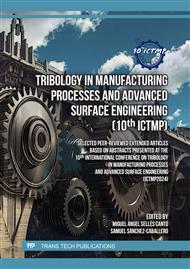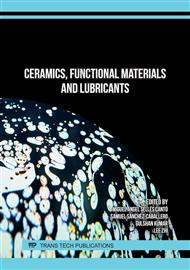p.23
p.33
p.41
p.55
p.63
p.71
p.79
p.87
p.97
Effect of Micro-Dimples on Lubrication in Ironing of Stainless Steel
Abstract:
Most forming oils have changed to chloride-free oil containing no chloride additives to protect environments regarding as the big issue of sustainable manufacturing. Several high-performance oil without chloride and die coating has been developed recently. In this study, the effect of micro-dimples on a die formed by a cutting machine or a laser device was tried to use chloride-free oil for ironing of stainless steel. The heavy galling occurred during ironing of stainless steel when the normal die without micro-dimples is used under a condition lubricated with chloride-free oil. The micro-dimples formed by the cutting machine only promoted galling because a large amount of burr remained around the dimples. The micro-dimples formed by the ultrashort pulse laser prevent from galling. The dimples have a smooth and mild profile on the die. The coverage area ratio of micro-dimples larger than 20% is needed for better ironing. A zigzag arrangement of the dimples uses the oil efficiently for well lubrication because galling occurs at the no dimples line between two rows of dimples if the dimples are neatly arranged parallel to the ironing direction.
Info:
Periodical:
Pages:
63-69
Citation:
Online since:
March 2025
Authors:
Keywords:
Price:
Сopyright:
© 2025 Trans Tech Publications Ltd. All Rights Reserved
Share:
Citation:



